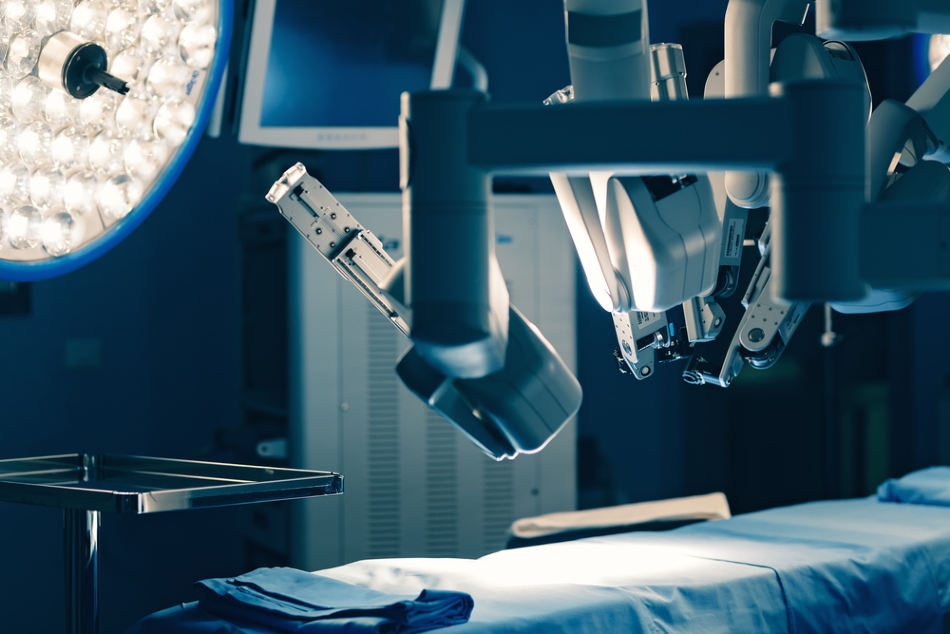
Image Credit: MAD.vertise/Shutterstock.com
However, robotic surgery is also known to pose certain unique challenges as hospitals continue to perform elective surgeries amid the ongoing COVID-19 pandemic.
Solutions and problems, which are being faced in urologic robotic surgery in the period of COVID-19, have been reviewed in the Official Journal of the American Urological Association (AUA)—Urology Practice®. The journal has been published by Wolters Kluwer in the Lippincott portfolio.
Brandee Branche, a medical student, in association with Lance Hampton, MD, Urology Chair and Director of Robotic Surgery, and Riccardo Autorino, MD, PhD, Director of Urologic Oncology from VCU Health in Richmond, Virginia, has outlined practical measures on how to perform safe and effective robotic urologic surgeries during the COVID-19 pandemic.
At the crux of the matter is the protection of surgical staff and patients, and preservation of optimal surgical technique while adapting to new infectious disease protocols.
Study Researchers
Screening, Prevention, and Perioperative Steps for Robotic Surgery During COVID
At present, robotic surgery accounts for a majority of the minimally invasive surgical procedures conducted by urologic oncologists and urologists, and will be a major priority as healthcare centers continue to perform non-emergency surgeries.
After targeting major problems, Dr Autorino and the study’s coauthors have proposed actions for continuing these crucial procedures:
- Patient screening—while preoperative screening has been advised for all patients during the ongoing COVID-19 pandemic, screening practices and resources differ extensively. This is because patients with COVID-19 infection are initially asymptomatic, which means simply checking for fever is not sufficient and that some form of diagnostic test is required. It is important to perform “priority tiering” of robotic surgery based on the urgency of the surgical procedure. For instance, patients who have active bleeding or high-risk cancers will be given a top priority over those who have less-advanced cancers, or those planned for reconstructive surgeries.
- Risk of virus transmission—unreciprocated queries related to the spread of coronavirus present difficulties in avoiding transmission at the time of surgery. Apart from aerosols and respiratory droplets, prior studies indicate that the virus is perhaps carried in smoke since electrocautery instruments are used in robotic surgeries. “The anesthesia method should minimize aerosolization of the virus, and negative pressure rooms [isolation rooms] are strongly preferred for COVID-19 positive patients,” wrote Dr Autorino and collaborators.
- Perioperative practices—the study’s authors dealt with problems related to preparations prior to entering the operating room, instruments to decrease the risk of gas leakage, positioning of the patient, and guidelines for filtration systems used in the operating room. Even in the case of patients who have tested negative for COVID-19 infection, “adequate personal protective equipment for the surgical team is essential to protect patients and health care workers.”
- Surgical time and trainee learning—surgical guidelines during the COVID-19 pandemic suggest that the number of personnel in the operating room should be kept to a minimum; however, there are certain concerns that this approach and other infection control measures may result in longer operating times. As elective procedures are postponed or canceled, novel techniques will be required to substitute the lost training prospects for urology residents.
Furthermore, the COVID-19 pandemic brings changes related to procedure costs and accessibility, informed consent procedures, and the potential risk of COVID-19 infection during the postoperative time.
Plans for prioritizing surgical procedures and the possibility of viral transmission in surgical smoke are the priorities for additional studies. Upcoming considerations must include whether robotic surgery consoles should be installed outside the operating room, as this is likely to reduce transmission to the operating surgeon.
Dr Autorino and collaborators emphasized that studies will also be required to validate that any steps taken to decrease coronavirus transmission are effective.
While we suggest altering the operating room environment to err on the side of safety, there must be evidence to sustain such changes in the long run.
Study Researchers
Journal Reference:
Branche, B., et al. (2020) Robotic Urological Surgery in the Time of COVID-19: Challenges and Solutions. Urology Practice. doi.org/10.1097/UPJ.0000000000000163